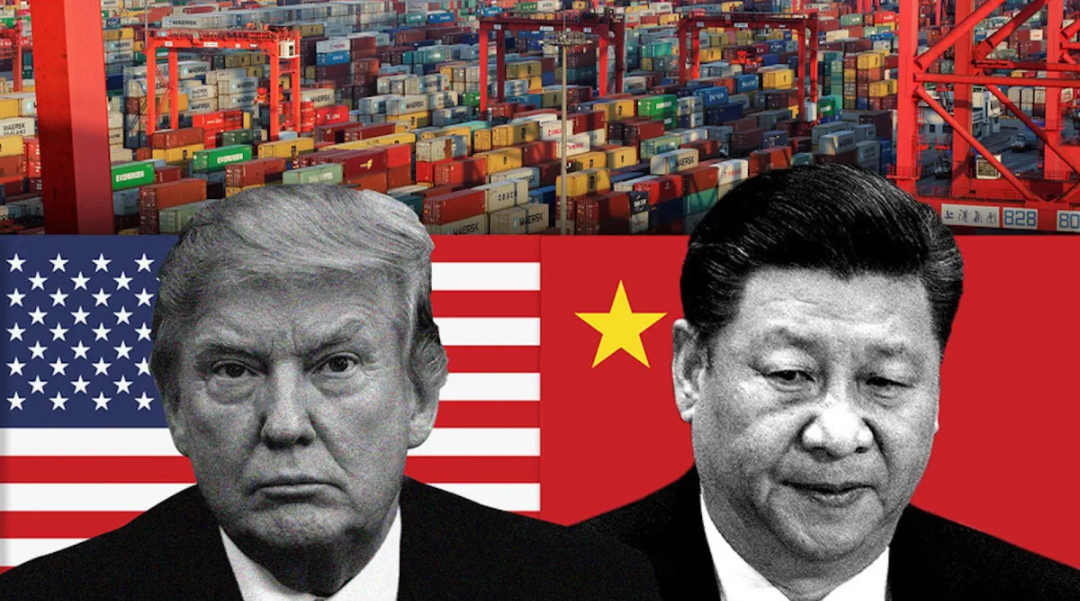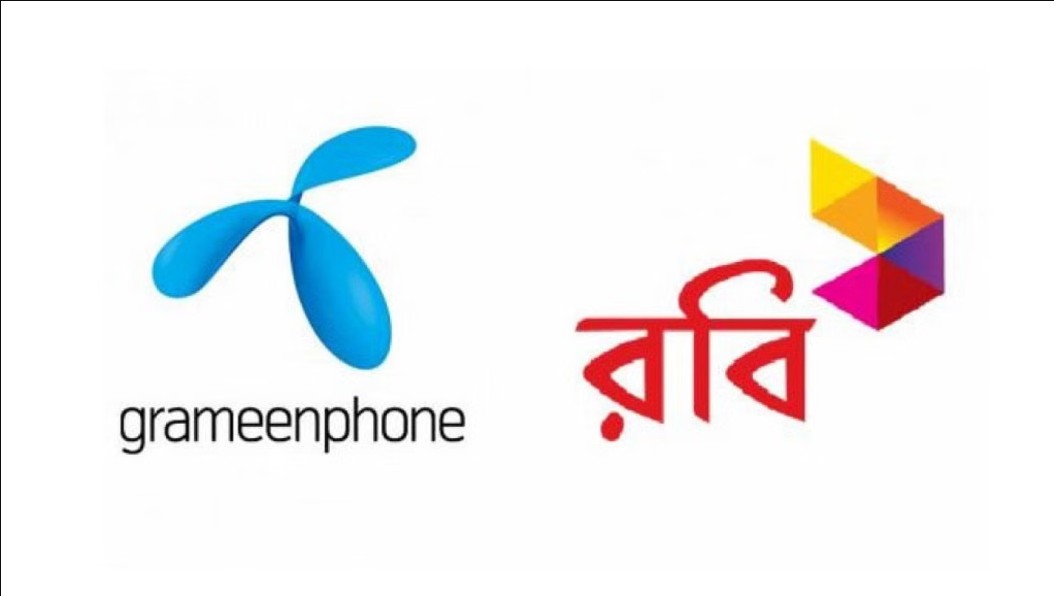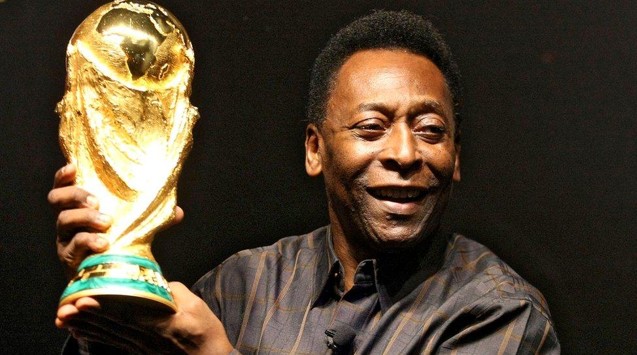Donald Trump’s trade war with China is producing one of the most tantalizing split screens in the history of global economics.
On one, the US president is going full bore against China and threatening a 104% tariff. This includes Vice President JD Vance dismissing the 1.4 billion-plus people generating the gross domestic product of Asia’s biggest economy as “Chinese peasants.”
On the other is Trump’s apparent willingness to talk to Japan, South Korea, Vietnam and other nations cowering in fear over reciprocal tariffs.
Japanese Prime Minister Shigeru Ishiba rushed key economic ministers, including Finance Minister Katsunobu Kato, to Washington to try to talk Trump out of tariffs sure to deal a huge blow to Japan’s export-heavy economy.
As US Treasury Secretary Scott Bessent told Fox News, “Japan is a very important military ally. They’re a very important economic ally, and the US has a lot of history with them. So I would expect that Japan is going to get priority just because they came forward very quickly.”
South Korea is doing the same. On Tuesday, Korea’s acting President Han Duck-soo said he and Trump had a “great call” about tariffs — Trump slapped a 25% tax on Seoul — and potential deals in energy and shipbuilding.
“We have the confines and probability of a great deal for both countries,” Han says. On social media, Trump said, “things are looking good.”
Trouble is, these two split-screen dramas will collide in short order as the “Tariff Man” attempts to knock China, the center of Asian trade, off its economic axis.
At least one thing seems certain: the odds of a giant US-China “grand bargain” trade deal are falling even faster than Trump’s approval rating.
Trump threatening to add another 50% to China’s already crushing 54% tariff level is the last thing Asia needs.
So far, Chinese leader Xi Jinping is pushing back against the Trumpian onslaught. Along with responding in kind to Trump adding a 34% tariff to the earlier 20% — imposing a 34% tax on US goods — Xi is signaling there will be no backing down.
Xi’s China is calling Trump’s bluff in ways Bessent and Trade Representative Jamieson Green clearly didn’t expect. And upping the odds that a clash of the titans in Washington and Beijing might lay waste to the global financial system.
Here, the US should be careful about what it wishes for. Neither nation is as ready for this economic brawl as their respective policymakers seem to project.
A Fitch Ratings downgrade last week reminded investors that China isn’t in a state-of-the-art financial position. Fitch downgraded China’s sovereign rating to ‘A’ from ‘A+’ amid concerns about shaky public finances.
“The downgrade reflects our expectations of a continued weakening of China’s public finances and a rapidly rising public debt trajectory during the country’s economic transition,” says Fitch analyst Jeremy Zook.
Zook adds that “in our view, sustained fiscal stimulus will be deployed to support growth, amid subdued domestic demand, rising tariffs and deflationary pressures. This support, along with a structural erosion in the revenue base, will likely keep fiscal deficits high.”
At the same time, Zook notes, “we expect the government debt/GDP to continue its sharp upward trend over the next few years, driven by these high deficits, ongoing crystallization of contingent liabilities and subdued nominal GDP growth.”
In other words, China has fiscal space to protect its 5% growth. But it’s not unlimited and deploying the stimulus “bazooka” yet again could come at a high cost in the long run.
The US, meanwhile, is carrying a US$36 trillion-plus national debt into this fight as recession talk heats up. Even worse is the self-inflicted nature of the US reckoning to come, one punctuated by a $10 trillion stock market loss so far.
As Mark Zandi, chief economist at Moody’s Analytics, notes, it “feels like we’re being pushed into recession – it’s recession by design.”
Hedge fund manager Bill Ackman, meanwhile, warns of a self-inflicted “economic nuclear winter” in Trump’s America.
“By placing massive and disproportionate tariffs on our friends and our enemies alike and thereby launching a global economic war against the whole world at once, we’re in the process of destroying confidence in our country as a trading partner,” says the Trump-supporting billionaire founder of Pershing Square.
Ackman adds that “business is a confidence game. The president is losing the confidence of business leaders around the globe. The consequences for our country and the millions of our citizens who have supported the president — in particular low-income consumers who are already under a huge amount of economic stress — are going to be severely negative. This is not what we voted for.”
Larry Fink, head of BlackRock, the globe’s largest asset manager, notes that “most CEOs I talk to would say we are probably in a recession right now.”
Over the weekend, economists at Goldman Sachs assigned a 45% probability of the US falling into a formal recession within the year, up from 35% a week earlier.
Nobel economics prize laureate, Paul Krugman, observes that “Donald Trump burned it all down,” adding that “Trump isn’t really trying to accomplish economic goals. This should all be seen as a dominance display, intended to shock and awe people and make them grovel.”
Only China is not bending the knee, much to Trump’s surprise. The People’s Daily, the Communist Party’s official newspaper, reports that Beijing is no longer “clinging to illusions” of striking a giant trade deal with the US.
Ray Dalio, the billionaire founder of Bridgewater Associates, warned that investors are too narrowly fixated on tariffs and not paying enough attention to the bigger “once-in-a-lifetime” breakdown occurring in major monetary, political and geopolitical orders.
“It is obviously incongruous to have both large trade imbalances and large capital imbalances in a deglobalizing world in which the major players can’t trust that the other major players won’t cut them off from the items they need (which is an American worry) or pay them the money they are owed (which is a Chinese worry),” he wrote on X.
On Tuesday (April 8), China’s commerce ministry criticized the “blackmail nature of the US” trade war and vowed Beijing will “fight till the end.” It called Trump’s threat to layer another 50% tariff on China “a mistake on top of a mistake.”
Hong Kong’s leader John Lee calls Trump’s trade war “reckless” and representative of “ruthless behavior” that’s imperiling the city’s economy.
“The reckless imposition of tariffs affects many countries and regions around the world with huge tax rate increases and covering a wide range of goods, disrupting the world’s economic and trade order, bringing great risks and uncertainties to the world,” Lee says.
These provocations, he adds, have Hong Kong pivoting toward increasing trade with Southeast Asia and the Middle East.
All this has President Xi ramping up moves to bolster the domestic economy. The People’s Bank of China has been cautious about rate cuts this year amid concerns about yuan weakness.
The PBOC has latitude to ease amid weak pricing power in the $18 trillion economy. Especially with China suffering from deflationary forces and fending off rampant “Japanification” talk as China lowers its inflation target to 2% from 3% in 2024.
Fears of sending the yuan tumbling have dominated PBOC discussions. The central bank also wants to safeguard the progress Beijing has made in deleveraging the financial system in recent years. PBOC Governor Pan Gongsheng worries that cutting rates might incentivize bad lending and borrowing decisions.
At the same time, a weaker yuan might trigger defaults among property developers as it becomes more expensive to make bond payments on offshore debt. Already, global investors are keeping close tabs on liquidity problems at major Chinese developers.
Putting yuan internationalization in jeopardy is another concern. For nearly a decade now, Xi’s government has been working to increase the yuan’s use in trade and finance.
Bottom of Form
Beijing stepped up cooperation with the BRICS — Brazil, Russia, India, China, South Africa — and Global South nations to pivot away from the dollar-centric world order.
Pivoting back to the beggar-thy-neighbor policies of the past might alarm international funds and tarnish the yuan’s chances of securing global reserve currency status.
A weaker yuan might have Japan, South Korea and other top Asian economies believing they have a green light to weaken exchange rates, too.
That would not go unnoticed by the Trump White House, which is escalating the biggest trade war in world history. If the White House concludes Beijing is manipulating the exchange rate, Trump might target China with even bigger tariffs.
Japan also is in Trumpian harm’s way. Corporate Japan was already reeling over Trump’s 25% import tax on all foreign-made automobiles when he hit the nation with a 24% import tax.
Hence Ishiba dispatching a trade negotiation team to Washington to secure a lower levy or buy Japan some time. Korea, too.
For Seoul, “it’s clear that major export products such as automobiles will be hit hard, and exports to the US through production bases in Vietnam will also be hit hard,” says Park Sang-hyun, an economist at iM Securities.
Late last month, trade ministers for China, Japan and Korea met for the first high-level economic dialogue in five years. The theme: beefing up regional trade as Trump’s White House supersizes its tariffs regime.
The nations’ trade ministers pledged to “closely cooperate for a comprehensive and high-level” process to create a three-way free trade agreement centered on “regional and global trade.”
Trump tossing new tariffs at the global trading system has officials in Seoul and Tokyo so worried that they’re talking despite historical enmities.
Ishiba’s Liberal Democratic Party is turning to Beijing as the US, once Japan’s most reliable partner, becomes wildly unpredictable. Ditto for Seoul, which has had a decidedly rocky relationship with the Xi era.
Yet Trump’s apparent determination to hit China Inc harder and harder will send shockwaves through Tokyo, Seoul and beyond. In Asia, the collateral damage zone is growing as we speak.
Source Courtesy: Asia Times





